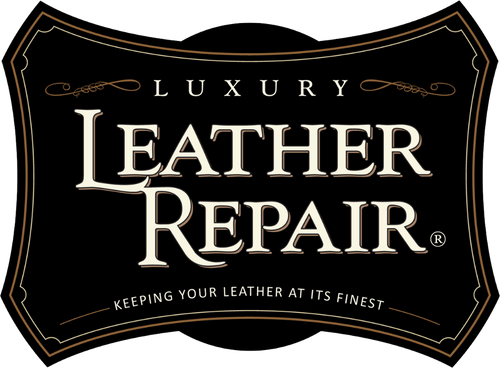Leather Repair Problems and Solutions
While leather is made to last, repairing it is certainly its own process. No matter the type of leather, stains can collect over the years, and the color will need to be refreshed after a while.
Before you begin trying our leather repair solutions, you must first consider the type of leather you’re working with. Certain types of leather more susceptible to scratches and spots, and some restoration techniques will work better on specific types of leather.
If you’re looking to repair burns, rips, and tears, you’ll first need to cut off rough or frayed pieces and scrape off the burned edges. To fill any holes, a leather filler works very well. Be sure to let this product dry in between applications. Once any holes are filled and have dried, you can use Leather Dye on the area.
When it comes to leather damage repair, we recommend the following:
- For Top Coated Leather – Clean and prepare the leather as much as possible prior to treating it. Then, you can start filling in any scuffs or cracks. Another option you should consider is removing any body oil stains left behind from anyone who has sat in the car’s seats. This is inevitable, but it’s easy to remove with a degreasing product. Next, use a colorant for a natural yet vibrant look. We suggest applying a top coat and protectant after the leather damage repair process. Using a protection cream can prevent future scrapes and conceal the old ones.
- For Aniline Leather – Sun-fading and body oils can easily fade Aniline leather, but luckily, it’s just as easy to recolor it. Start the recoloring process by first removing body oil stains with a degreaser. Afterward, clean and apply a hydrating cream to the leather. A hydrating product will ensure the color absorbs into the leather without a dry-looking finish. You can then begin to apply leather dye in light coats, allowing each coat to dry before applying the next one. The finishing touch is a second application of the hydrating cream as well as a leather protectant to seal everything. If you need to remove scrapes or scuffs on Aniline leather, you can use a hair dryer to gently massage the imperfections out of the leather. This will also help blend the leather’s color. From here, be sure to use a protection cream and, if need be, a product specially designed for scratches on this type of leather.
- For Nubuck Leather – Using a Nubuck cloth or brush can help restore the leather’s finish by blending away scuffs or scrapes. If you can still see imperfections, continue to treat it as if it were Aniline leather. When recoloring, we also suggest following the Aniline leather process. If you’d like to use a protector, be sure that it can only be used on Nubuck leather.
There you have it: easy leather repair solutions you can use at home or on the go. Taking the time to renew your car’s interior goes a long way to improving the longevity of the leather and the comfort of your ride.

 My Account
My Account
